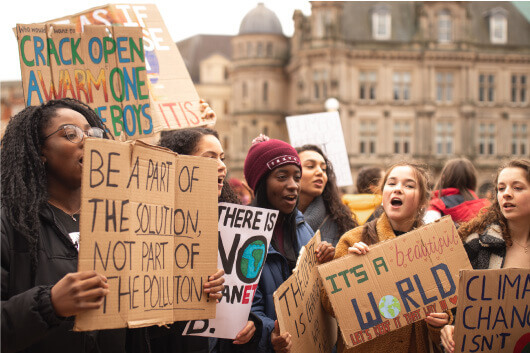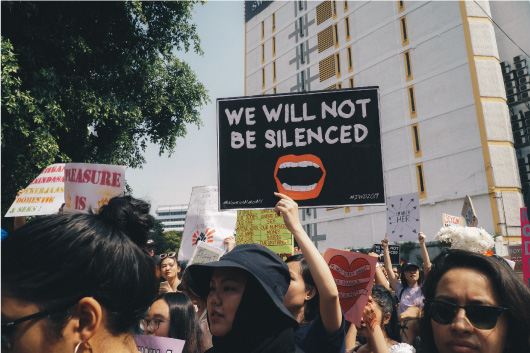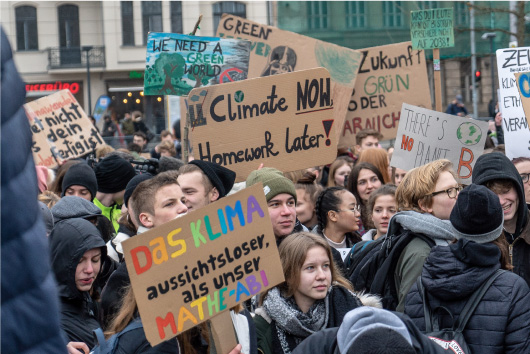In every country many people have little prospect for a better future. Lacking hope, purpose or dignity, they watch from society’s sidelines as they see others pull ahead to ever greater prosperity. Many have escaped extreme poverty worldwide, but even more have neither the opportunities nor the resources to control their lives. Far too often gender, ethnicity or parents’ wealth still determines a person’s place in society.

Achim Steiner
Administrator
United Nations Development Programme
Achim Steiner
Administrator
United Nations Development Programme
Inequalities. The evidence is everywhere. Inequalities do not always reflect an unfair world, but when they have little to do with rewarding effort, talent or entrepreneurial risk-taking, they can be an affront to human dignity. Such inequalities in human development hurt societies, weakening social cohesion and people’s trust in government, institutions and each other. Most hurt economies, wastefully preventing people from reaching their full potential at work and in life. They often make it harder for political decisions to reflect the aspirations of the whole of society and to protect the planet, if the few pulling ahead flex their power to shape decisions in their interests. In the extreme, people can take to the streets.



There has been some progress worldwide in people’s ability to overcome extreme deprivations (basic capabilities), such as access to basic education, basic health services and basic technology (the left side of the illustration below). Many people at the bottom are now reaching the initial stepping stones of human development. Yet, looking at the right we see that disparities are high or increasing in the areas expected to become more important in the future (enhanced capabilities), including receiving quality education at all levels, access to high-speed Internet or more advanced health services. Under the shadow of the climate crisis and sweeping technological change, people well positioned today appear set to get even farther ahead tomorrow.
Data shows that two children born in 2000 in countries with different levels of human development will have vastly different prospects for adult life today.
The child born in the very high human development country is very likely to be enrolled in higher education, along with 55 percent of 20-year-olds in very high human development countries. She or he is preparing to live in a highly globalized and competitive world and has chances do so as a highly skilled worker.
In contrast, the child from the low human development country is much less likely to be alive. Some 17 percent of children born in low human development countries in 2000 will have died before age 20, compared with just 1 percent of children born in very high human development countries. And those who survive have an expected lifespan 13 years shorter than their counterparts in the group of more developed countries. The child born in the low human development country is also unlikely to still be in education: Only 3 percent are in higher education.
Both of these young people are just beginning their adult lives, but circumstances almost entirely beyond their control have already set them on different and unequal paths in terms of health, education, employment and income prospects—a divergence that can be irreversible.
Children born in 2000 in low human development countries
Children born in 2000 in very high human development countries
In higher education
In higher education
Not in higher education
Not in higher education
Died before age 20
Died before age 20
The 21st century has witnessed great progress in living standards, with an unprecedented number of people around the world making a “great escape” from hunger, disease and poverty—moving above minimum subsistence, still, many people have been left behind.
The Human Development Index shows impressive improvement on average, reflecting dramatic improvements in achievements such as life expectancy at birth, driven largely by sharp declines in infant mortality rates. But, the evidence points out that inequalities remain widespread across all capabilities – basic and enhanced. Some refer to life and death, others to access to knowledge and life-changing technologies.

Michelle Bachelet Jeria
United Nations High Commissioner for Human Rights
Michelle Bachelet Jeria
United Nations High Commissioner for Human Rights
As we enter the 2020s, a new set of capabilities is becoming fundamental to 21st century life. Inequalities in these enhanced capabilities show strikingly different dynamics from those in basic capabilities. They are at the root of a new generation of inequalities.
Inequalities for some basic capabilities are slowly narrowing across most countries, even if much remains to be done. Life expectancy at birth, percentage of the population with a primary education and mobile-cellular subscriptions all show narrowing inequalities across human development groups (figure). The people at the bottom are progressing faster than those at the top.
The gain in life expectancy at birth between 2005 and 2015 for low human development countries was almost three times that for very high human development countries, driven by a reduction in child mortality rates in developing countries. And countries with lower human development are catching up in access to primary education and access to mobile phones.
Change in life expectancy at birth,
between 2005-2015
(years)
Change in primary education,
between 2007-2017
Change in mobile-cellular subscriptions,
between 2007-2017
(per 100 inhabitants)
In contrast, inequalities in enhanced capabilities are widening. For instance, despite data challenges, estimates suggest that the gain in life expectancy at age 70 from 1995 to 2015 in very high human development countries was more than twice that in low human development countries.
Change in life expectancy at age 70,
between 2005-2015
(years)
Change in tertiary education,
between 2007-2017
Change in fixed broadband access,
between 2007-2017
(per 100 inhabitants)
These inequalities in human development are a roadblock to achieving the 2030 Agenda for Sustainable Development. They are not just about disparities in income and wealth. They cannot be accounted for simply by using summary measures of inequality that focus on a single dimension. And they will shape the prospects of people that may live to see the 22nd century. The Report explores inequalities in human development by going beyond income, beyond averages and beyond today.

Pedro Conceição
Director
Human Development Report Office
Pedro Conceição
Director
Human Development Report Office
Disparities in human development remain widespread, despite achievements in reducing extreme deprivations
A new generation of inequalities is emerging, with divergence in enhanced capabilities, despite convergence in basic capabilities
Inequalities accumulate through life, often reflecting deep power imbalances
Assessing and responding to inequalities in human development demands a revolution in metrics
We can redress inequalities if we act now, before imbalances in economic power are politically entrenched
A comprehensive assessment of inequality must consider income and wealth. But it must also understand differences in other aspects of human development and the processes that lead to them.
The analysis of inequalities in human development must go beyond summary measures of inequality that focus only on a single dimension.
Inequalities in human development will shape the prospects of people that may live to see the 22nd century.
Any comprehensive assessment of inequality must consider income and wealth. But it must also go beyond dollars and rupees to understand differences in other aspects of human development and the processes that lead to them. There is economic inequality, of course, but there are also inequalities in key elements of human development such as health, education, dignity and human rights.
Chapter 1 shows that the world is expected to reach 2030 with preventable gaps in infant mortality, out-of-school children and extreme income poverty. Drawing on granular data to zoom in on geographic areas, it documents overlapping deprivations and intersectional exclusions. Finally, the chapter zooms out on the dynamics of risk—health, natural disaster or conflict shocks that expose groups or individuals to added vulnerability. Behind these patterns lie the stubborn challenge of strengthening the capabilities of those furthest behind.
Chapter 2 shows that inequalities in human development often accumulate through life, frequently heightened by deep power imbalances. Understanding inequality—even income inequality—means homing in on the underlying processes that lead to it. Different inequalities interact, while their size and impact shift over a person’s lifetime.
Inequalities can start before birth, and many of the gaps may compound over a person’s life. When that happens, it can lead to self-perpetuating engines of increasing disadvantage. This can happen in several ways, especially in the nexus among health, education and parents’ socioeconomic status.
Too often the debate about inequality is oversimplified, relying on summary measures of inequality and incomplete data that provide a partial—sometimes misleading—picture, both in the sorts of inequality to consider and the people affected. The analysis must go beyond averages that collapse information on distribution to a single number a look at the ways inequality plays out across an entire population, in different places and over time.
Assessing inequalities in human development demands a revolution in metrics to fill the many data gaps to measure these different inequalities and, more generally, to go systematically beyond averages. For income and wealth inequality the progress over the past few years has been remarkable. But data remain scarce, in part because of the lack of transparency and the low availability of information. On a new index presented in this Report, 88 countries score 1 or less (on a 20-point scale) for availability of information on income and wealth inequality—meaning that they have 5 percent or less of what would be an ideal level of transparency.
Innovative work—some experimental—is unfolding. Chapter 3 presents results based on the Distributional National Accounts methodology which could integrate, in an overarching agenda, improvements to the System of National Accounts and strengthen household surveys and administrative data. The methodology reveals dynamics of income inequality that are masked when using summary measures that rely on a single data source.
Some groups of people are systematically disadvantaged in many ways, the largest worldwide is undoubtedly women. Gender disparities are among the most entrenched forms of inequality everywhere and one of the greatest barriers to human development. Inequality is still sharp in the power men and women exercise at home, in the workplace or in politics.
Social and cultural norms often foster behaviour and biases that perpetuate such inequalities. These biases follow a pattern: They tend to be more intense in the areas where more power is involved. And there is backlash, as the proportion of people biased against gender equality has grown over the last few years, even though there are different patterns across countries.
Bias against gender equality is on the rise: The share of both women and men worldwide with no gender social norms bias fell between 2009 and 2014
Indicated bias in one or less questions from the World Values Survey
Female
Male
Indicated bias in two or more questions from the World Values Survey
Female
Male
2005 - 2009
2010 - 2014
A changing world requires considering what will shape inequality in the future.
Existing—and new—forms of inequality will interact with major social, economic and environmental forces to determine the lives of today’s young people and their children. Two seismic shifts will shape the 21st century:
Inequality and the climate crisis are interwoven—from emissions and impacts to policies and resilience. Countries with higher human development generally emit more carbon and have higher ecological footprints overall.
It will hurt human development in many ways beyond the impacts of crop failures and natural disasters. Between 2030 and 2050, climate change is expected to cause an additional 250,000 deaths a year from malnutrition, malaria, diarrhoea and heat stress. Hundreds of millions more people could be exposed to deadly heat by 2050, and the geographic range for disease vectors—such as mosquitoes that transmit malaria or dengue—will likely shift and expand.
Technological advances such as machine learning and artificial intelligence can leave behind entire groups of people, even nations. Indeed, it may be that these new inequalities, and the spectre of an uncertain future, help explain why people consistently believe that inequality is worsening, even when some statistics suggest the opposite.
Technological change has been disruptive before, and much can be learned from the past. One key lesson is to ensure that major innovative disruptions help everyone, which requires equally innovative policies as well as new institutions. The current wave of technological progress will also require changes, such as stronger antitrust policies and laws to govern the ethical use of data and artificial intelligence. Many of these require international cooperation to succeed.
The Report argues that tackling inequalities is possible. But it isn’t easy. It requires clarifying those that matter to the advancement of human development, as well as a better understanding of the patterns of inequality and what is driving them.
There is still time to act. But the clock is ticking. Imbalances in economic power can be eventually translated into entrenched political dominance. And that, in turn, can lead to greater inequality and even environmental disasters. Action at the start of this chain—through curbing economic power—is far easier than relying on interventions farther down the track.
Of course, action is context specific. The nature and relative importance of inequalities are complex and multifaceted and vary across countries—and so should policies to address them. What to do to address inequalities in human development is ultimately for each society to determine.